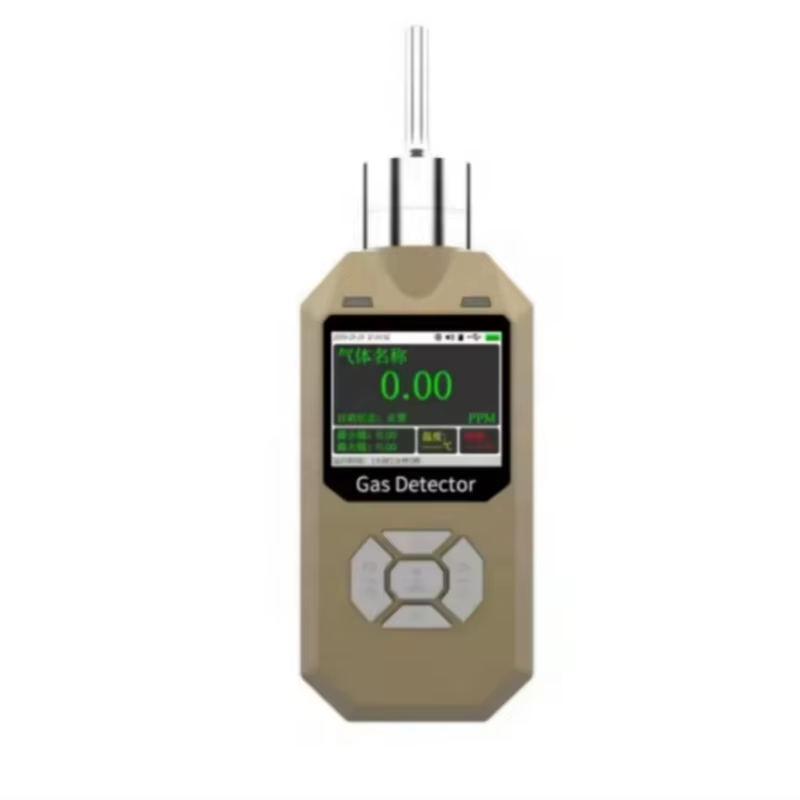Date: January 14, 2025
By: [Yunying]
Location: Washington, D.C. — In a transformative leap for modern agriculture, handheld gas sensors are rapidly being adopted across the United States, enhancing the ability of farmers to monitor soil and crop health, manage pests, and optimize fertilization processes. These advanced devices offer immediate, on-the-spot measurements of gases like ammonia (NH3), methane (CH4), carbon dioxide (CO2), and nitrous oxide (N2O), providing critical data that can bolster yields and improve sustainability practices.
The Importance of Gas Monitoring in Agriculture
Gas emissions play a significant role in agricultural productivity and environmental impact. For example, excessive ammonia emissions from fertilizers can lead to soil acidification and affect crop health. Methane and nitrous oxide, potent greenhouse gases, are released during various agricultural processes, including livestock digestion and fertilization.
With climate change intensifying the challenge of food production, the need for precise and real-time data has never been more pressing. The introduction of handheld gas sensors allows farmers to make informed decisions that can effectively mitigate emissions and enhance crop management.
How Handheld Gas Sensors Work
Handheld gas sensors utilize advanced sensor technology, often based on electrochemical or optical measurement principles, to detect and quantify specific gases in the field. These compact devices provide farmers with immediate feedback on gas concentrations, enabling rapid decision-making in situations such as:
Fertilization Practices: Farmers can monitor ammonia levels during fertilization to avoid over-application and reduce atmospheric emissions.
Crop Health Assessment: By measuring gas emissions from soil or plants, farmers can assess the health of crops and adjust management practices accordingly.
Pest Management: Gas sensors can detect specific volatile organic compounds (VOCs) emitted by plants under stress, alerting farmers to pest infestations or disease outbreaks.
User-Friendly and Efficient
The latest handheld gas sensors are designed for ease of use, featuring simple interfaces and lightweight designs that allow farmers to carry them conveniently in the field. Many devices connect to smartphones or tablets, enabling real-time data analysis and visualization.
“This technology has made a significant difference in how we monitor our fields,” says Lena Carter, a corn farmer in Iowa. “I can check ammonia levels right after I apply fertilizer instead of waiting days for lab results. It saves us time and helps us farm more sustainably.”
Regulatory Support and Funding
The U.S. Department of Agriculture (USDA) and various state agricultural departments are increasingly recognizing the importance of these technologies. Programs are being established to help fund the purchase of gas sensors and provide training on their use. The USDA’s Natural Resources Conservation Service is promoting these sensors as a tool for farmers looking to implement environmentally friendly practices.
“The use of handheld gas sensors is a win-win for farmers and the environment,” explains Dr. Maria Gonzalez, an agricultural technologist. “Farmers can improve their practices, while we simultaneously work towards reducing greenhouse gas emissions from the agricultural sector.”
Challenges and Future Directions
While the benefits of handheld gas sensors are clear, challenges remain. Initial costs can be a barrier for some farmers, particularly those operating on smaller margins. Moreover, a learning curve exists as producers become accustomed to integrating this technology into their operations.
To address these challenges, partnerships between tech companies, agricultural extension services, and universities are emerging to offer training programs that help farmers understand how to use and interpret data from gas sensors effectively.
Conclusion: Paving the Way for Sustainable Agriculture
As farmers across the United States increasingly adopt handheld gas sensors, the ability to monitor and manage agricultural practices in real-time is reshaping the landscape of modern farming. This technology not only enables farmers to improve their crop yields but also empowers them to take proactive steps toward sustainability and environmental stewardship.
The future of agriculture is becoming clearer with every measurement taken in the field. With the continued advancement of gas sensor technology and increasing regulatory support, it is likely that these handheld devices will play a critical role in the quest for a more sustainable and productive agricultural sector in the years to come.
For more gas sensors information,
please contact Honde Technology Co., LTD.
Email: info@hondetech.com
Company website: www.hondetechco.com
Post time: Jan-14-2025


